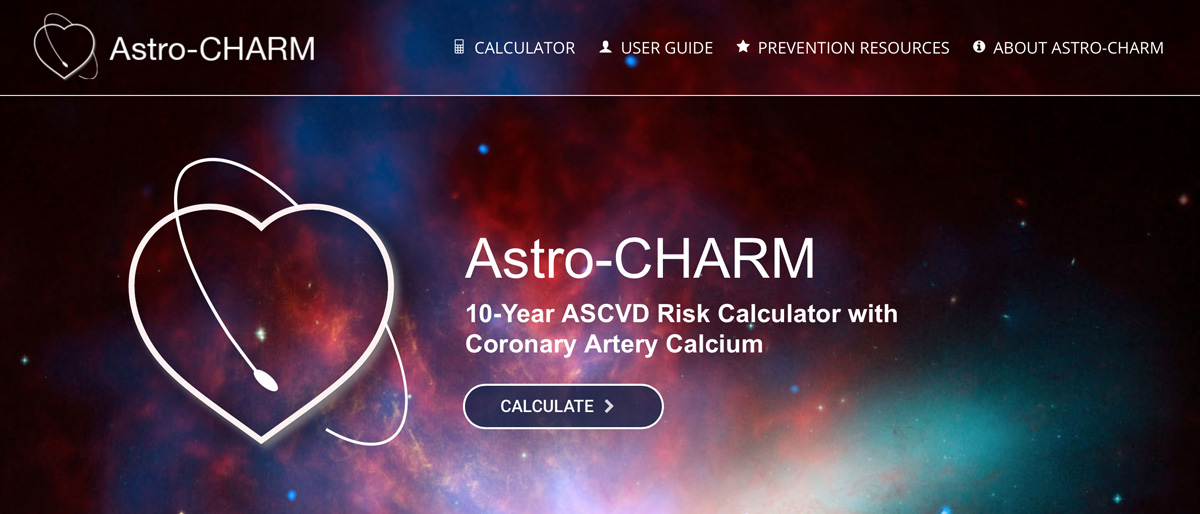Predicting heart attack and stroke risk just got easier

A team of researchers led by UT Southwestern cardiologists has developed a new online tool to more accurately predict who among those ages 40-65 is at the highest risk of suffering a heart attack or stroke in the next 10 years.
Measuring coronary artery calcium is among the most powerful and novel cardiovascular risk assessment tests. Until now, patients could not easily combine this measurement with traditional risk factors like blood pressure and cholesterol to predict the risk of having a stroke or heart attack.
The new tool, named the Astronaut Cardiovascular Health and Risk Modification (Astro-CHARM) calculator, was developed by the National Space Biomedical Research Institute (NSBRI) together with a research team led by UTSW preventive cardiologist Dr. Amit Khera. Its purpose is to facilitate precise cardiovascular risk assessment for astronauts as well as the general population. Study results were published recently in Circulation.
“We found that the Astro-CHARM tool significantly improves cardiovascular risk prediction,” said first author Dr. Khera, Professor of Internal Medicine and Director of UT Southwestern’s Preventive Cardiology Program. “Cardiovascular risk assessment can also be critical in younger populations, particularly those in high-risk occupations.”
NASA launched the study with UT Southwestern to enhance cardiovascular risk prediction for astronauts, who are predominantly middle-aged men and women.
“This study is a perfect example of how NASA (and NSBRI) sponsored research helps both astronauts and the general population on Earth,” said senior author Dr. Benjamin Levine, Professor of Internal Medicine at UTSW and Director of the Institute for Exercise and Environmental Medicine at Texas Health Presbyterian Hospital Dallas.
In the study, the following risk factors were self-reported: race/ethnicity, history of cardiovascular diseases, medication usage, family history of myocardial infarction, and smoking status. Height, weight, blood pressure, plasma lipids, body mass index (BMI), and glucose were measured using standard methods. The researchers also looked at the patients’ personal and/or family history of diabetes and myocardial infarction.

